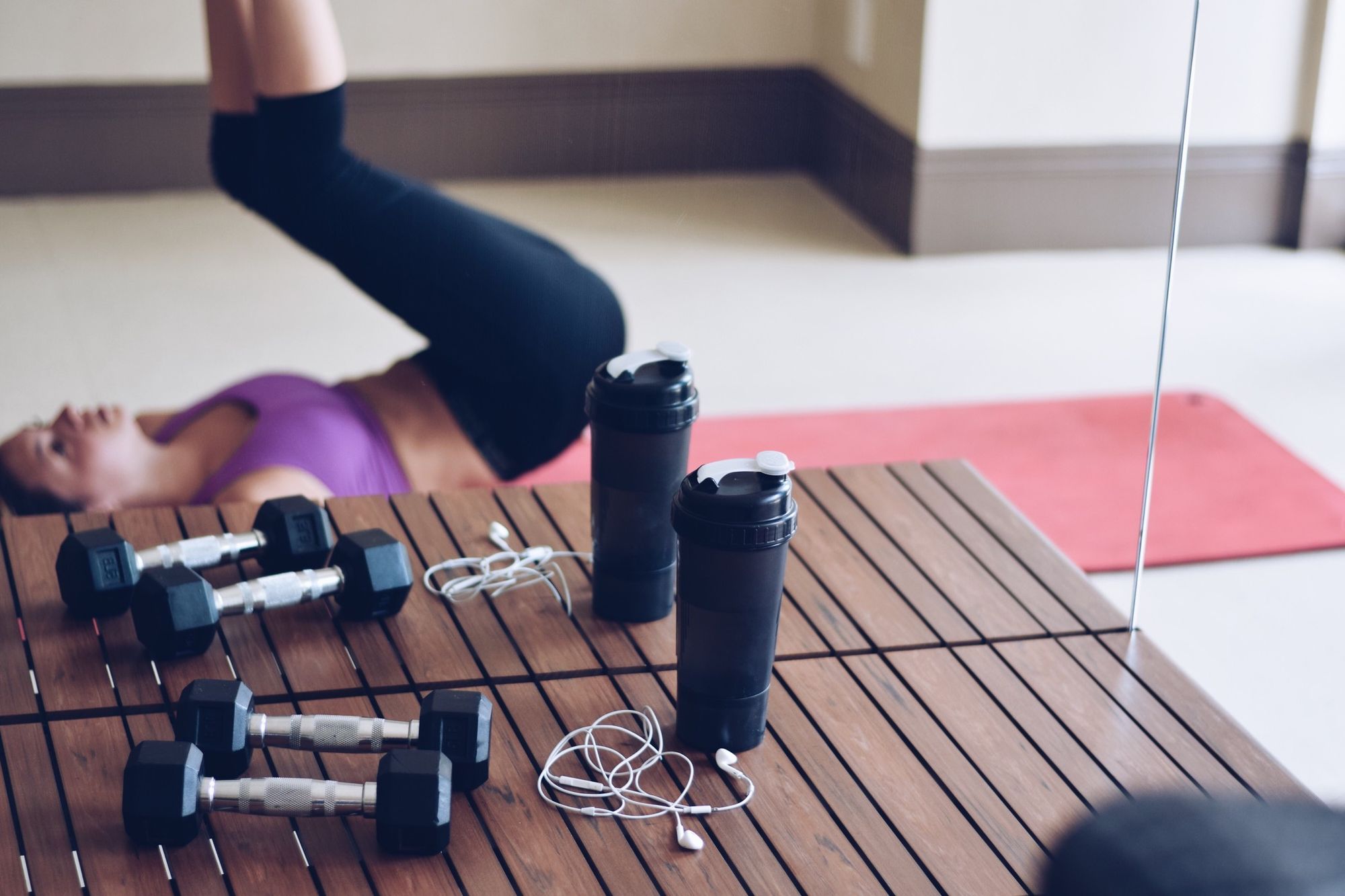5 Tips That’ll Help You Build a Healthier Body Image
Strength training always carries the risk of fuelling a negative body image. Here are 5 tips that'll help if you're struggling to love your body.

There's little use denying it: the pursuit of fitness for most of us cranking out reps after reps in the gym is primarily driven by aesthetic goals.
Think: building a perkier butt, getting those quad sweeps to come in, adding mass to that bicep peak … and to some degree, that involves at least a little bit of body dissatisfaction. That’s normal.
What's not normal, however, is when this dissatisfaction evolves – and morphs – into an obsession with changing how your body looks.
Where you start nitpicking every little detail about your physique, things that even your loved ones fail to see (e.g. “my left trap is a degree higher than the left”).
Thankfully, chances are, you’re not at that stage yet.
But strength training always carries that risk. So, you need to work on your body image actively. By the way: yes, wishing to improve your physique and having a healthy body image are not mutually exclusive goals. You can love your body – but still want it to look better.
1: Set non-aesthetic goals, too
The first step to warding off a negative body image is to set non-aesthetic goals, too.
A disclaimer: this doesn’t mean that you shouldn’t have aesthetic goals (e.g. a wider back, six-pack abs, and boulder shoulders).
It just means that you should set other goals that'll help you feel good about your body, that're not dependent on how your body looks.
Some good examples include:
- Progressively overloading: Making sure that you increase your training volume not only helps you build more muscle mass but (more importantly) lets you know that you're getting stronger – and more capable of lifting more. It's an affirmation of what your body can do.
- Making sure you hit your daily steps: A worthy goal to set here is to hit 10,000 steps daily. This helps you increase your NEAT – and makes you feel good about your ability to accomplish fitness goals.
- Eating more protein through whole foods: Fitness doesn't have to be about physical activity. It's a lifestyle – so it includes your nutrition. While topping up your protein intake shortfall with protein powder isn’t necessarily a Bad Thing, it isn’t entirely ideal either. Working in more protein through whole foods is, therefore, an excellent goal to strive for.
Of course, there are plenty of other non-aesthetic goals you could set. Use a little creativity. You’ll soon feel much, much better about what your body can do.
2: Marie-Kondo your social media accounts
Have you ever seen a fitness influencer (or maybe someone you know) flaunt The Perfect Body – complete with sun-kissed skin – on social media … and promptly felt 1,000% worse about yourself?
You’re not alone. Social media usage does appear to be correlated with body image issues.
Take, for instance, this 2016 systematic review of 20 papers. Its findings were that photo-based activities (e.g. scrolling through Instagram) are a problem when it comes to negative body image thoughts.
The solution to this? Do a ‘Marie-Kondo’ on your social media accounts.
Don’t be afraid of unfollowing any accounts that make you feel bad about your body – or triggers the comparison game. Instead, follow body-positive (or even body-neutral) accounts.
3: Recognize that nobody’s perfect
In close relation to the point above, remind yourself that nobody looks perfect. Nobody. Not the fitness influencer you see on Instagram, not the Hollywood celebrity you see on big screens, and not the personal trainers you see on TikTok.
Here’s something to remember: posing (and lighting!) can greatly affect how someone looks in pictures.
You’d also never know if they put themselves through a super strict diet and workout routine to look good on the photoshoot. Oh, and, of course, let's not forget the Photoshop and filters. So your favorite fitness influencer might not even have such popping abs – or abs at all – if you were to spot them in real life.
Instead of chasing after unrealistic goals in the gym, work hard on improving your physique for yourself.
4: Create ‘reminder’ affirmations
Look through any article promising to help spice up your relationship with your significant other … and you'd spot this tip: "Leave love notes for your partner to find". Or, you know, something along the lines (but with a hint of R21).
Why not do the same for yourself?
Given that you’re most likely to nitpick on your body while staring at yourself in the mirror, why not stick love notes to yourself there?
Remind yourself of what your body can do – instead of nitpicking at how your body looks in the mirror.
Can’t think of anything to write? Perhaps the following would inspire you:
- "I love my body, and I love myself."
- “I work out not because I hate my body, but because I LOVE it.”
- “My body can do awesome things.”
- “I enjoy feeling good.”
Other places to consider sticking ‘affirmation notes’ on would be the dinner table; to remind yourself to maintain a healthy relationship with food. Things to write can include: “I eat for energy and nourishment”.
Give it a go. Your mental well-being would love you for it.
5: Seek professional help whenever necessary
Can’t seem to feel better about your body – no matter how hard you try? Are your body image issues keeping you from living your best life?
Then it may be time to seek professional help.
Just so you know: cognitive behavioral therapy (CBT) is a common form of treatment for body image issues. A licensed therapist can help you learn to recognize when you’re imposing unrealistic expectations on yourself.
Better yet, they can teach you how to 'fight off' negative thoughts on your body with mindfulness and positive self-talk.
Bottom line? Getting treatment is a critical step to recovery; don’t be afraid of it.
Oh, and by the way: need a 24/7 reminder of just what your body is capable of? Then you should track your workouts with GymStreak. This way, you can always quickly look back at your training statistics – and marvel at just how strong your body has become over time.
Bonus: the AI-powered personal trainer app also helps program your workouts, so you never have to worry about it. You only need to show up. And train.
Get GymStreakReferences
Holland, G., & Tiggemann, M. (2016). A systematic review of the impact of the use of social networking sites on body image and disordered eating outcomes. Body Image, 17, 100–110. https://doi.org/10.1016/j.bodyim.2016.02.008
Rosen, J. C., Reiter, J., & Orosan, P. (1995). Cognitive-behavioral body image therapy for body dysmorphic disorder. Journal of Consulting and Clinical Psychology, 63(2), 263–269. https://doi.org/10.1037//0022-006x.63.2.263

